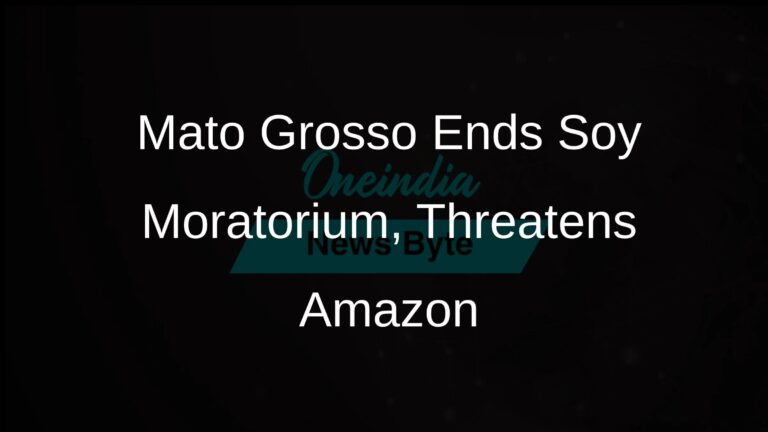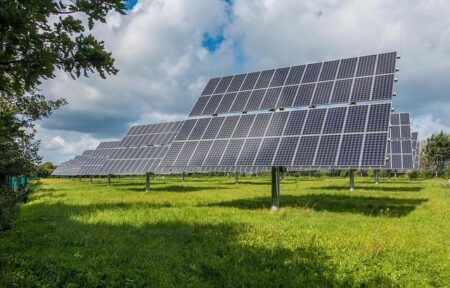Brazil has announced the suspension of the Amazon Soy Moratorium, a voluntary agreement that for over a decade has prevented soybeans from being sourced from deforested areas of the Amazon rainforest. The decision has sparked widespread concern among environmentalists, indigenous groups, and international stakeholders, who warn that halting the moratorium could lead to a significant increase in deforestation rates in one of the world’s most critical ecological regions. This development marks a pivotal moment in the ongoing struggle to balance agricultural expansion with rainforest conservation in Brazil.
Brazil Halts Amazon Soy Moratorium Amid Rising Deforestation Concerns
Brazil’s decision to halt the Amazon Soy Moratorium has sparked immediate concern among environmentalists and global market stakeholders. The moratorium, which had been in place since 2006, effectively restricted the purchase of soy produced on lands deforested within the Amazon biome. Critics argue that the suspension could remove crucial safeguards, potentially accelerating illegal land clearing and putting the region’s biodiversity at greater risk. The halt comes amid a complex backdrop of economic pressures and political shifts, with the government citing the need to balance agricultural growth with environmental protection.
Experts warn that this policy reversal might lead to several immediate consequences:
- Increased deforestation rates: Without the moratorium’s restrictions, soy cultivation could expand into previously protected forest areas.
- Market uncertainty: International buyers concerned about sustainable sourcing may reconsider their commitments to Brazilian soy.
- Regulatory challenges: Enforcement agencies may struggle to monitor compliance and illegal activities effectively.
Below is a brief comparison of key indicators before and after the moratorium suspension:
| Indicator | During Moratorium | Post Suspension |
|---|---|---|
| Amazon Deforestation Rate | Approx. 7,500 kmﺡﺎ/year | Projected increase by 20% |
| Soy Export Volume | 35 million tons/year | Potential growth amid regulatory relaxation |
| Number of Sustainable Buyers | 80% | |
| Number of Sustainable Buyers | 80% | Expected to decrease due to market concerns |
| Impact Area | Potential Consequences |
|---|---|
| Forest Cover | Loss of up to 30% more Amazon area annually |
| Indigenous Lands | Increased conflicts and land disputes |
| Wildlife | Threat to habitat corridors and biodiversity |
| Climate | Higher emissions impacting global targets |
Calls for Stronger Policies and Corporate Accountability Grow Louder in Response
Amid growing concern over the suspension of the Amazon Soy Moratorium, environmental groups and industry watchdogs are intensifying demands for more stringent regulations and corporate responsibility. Advocates emphasize that voluntary commitments are no longer sufficient to halt illegal deforestation and habitat destruction, urging governments and businesses alike to implement clear, enforceable standards.
Key demands from stakeholders include:
- Mandatory supply chain transparency to trace soy back to its origins
- Stricter penalties for companies found sourcing from deforested lands
- Increased funding for indigenous community monitoring efforts
- Adoption of binding environmental criteria within trade agreements
| Stakeholder Group | Primary Concern | Proposed Action |
|---|---|---|
| Environmental NGOs | Illegal deforestation increase | Enforceable legal frameworks |
| Corporate Sector | Supply chain risks | Third-party audits & certifications |
| Indigenous Communities | Loss of territorial rights | Empowered land stewardship |
To Conclude
As Brazil moves forward with suspending the Amazon Soy Moratorium, environmentalists and industry stakeholders alike are closely monitoring the potential ramifications for the world’s largest rainforest. The decision marks a critical juncture in the ongoing battle to balance economic development with conservation efforts. With deforestation rates already a global concern, this shift could accelerate habitat loss and undermine international commitments to sustainability. The coming months will be crucial in determining whether new regulatory frameworks can mitigate the risks or if the Amazon will face intensified pressure from agricultural expansion.




